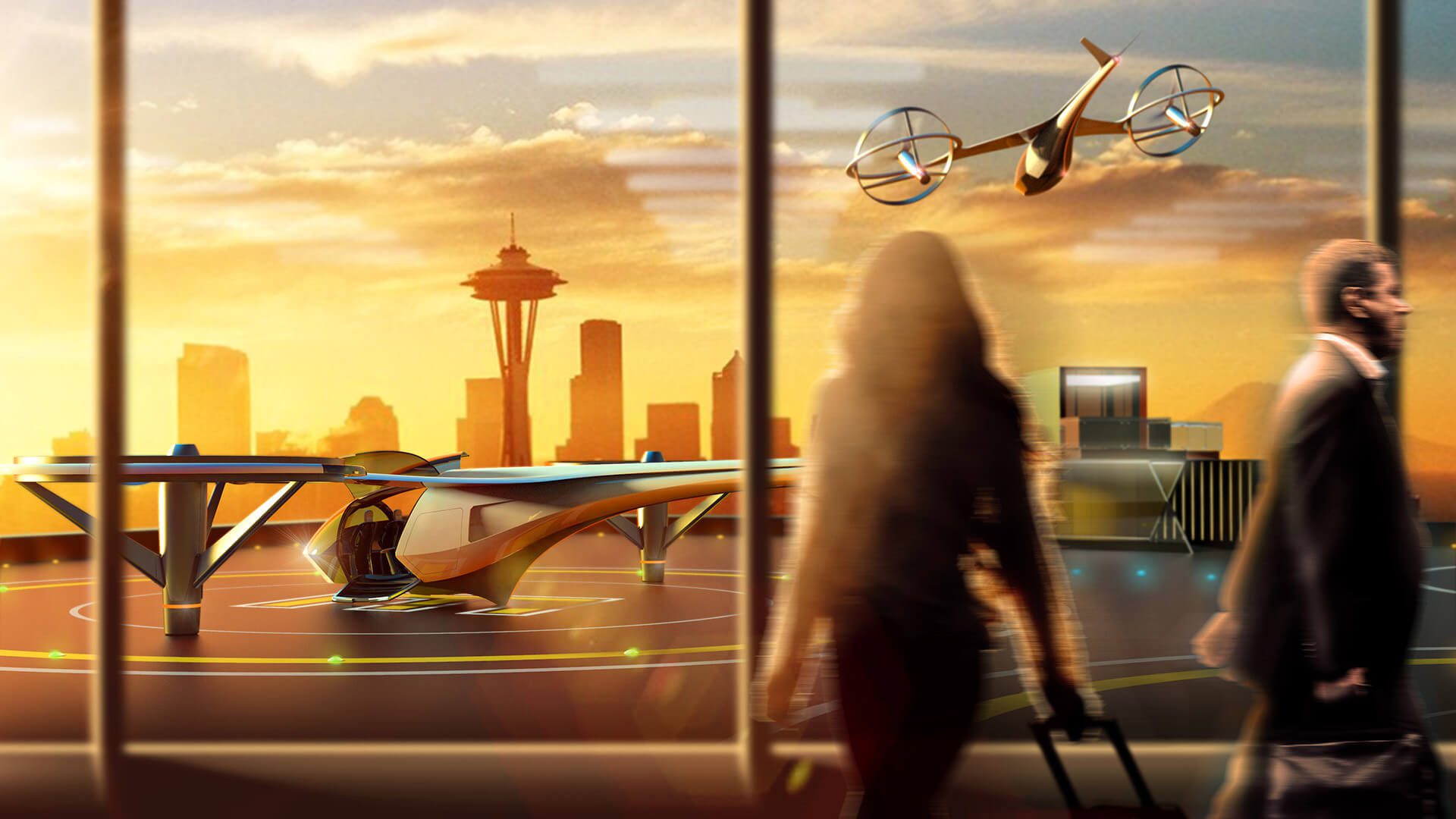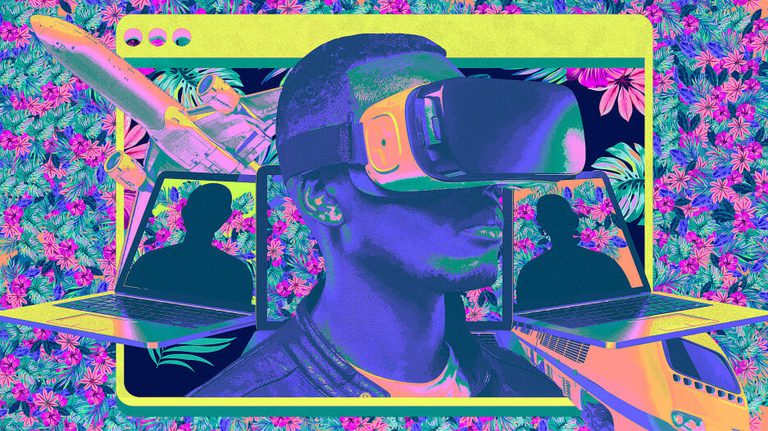
Mobility

Devin Liddell | Principal Futurist

Devin Liddell
Devin designs preferred futures in aviation, automotive, smart cities, personal mobility, space travel, and more.
Connect with Devin on LinkedIn
The metaverse is the convergence of the digital and the physical into a new experience of the internet, and it’s a hot topic at the moment. There’s good reason for all the attention. Consider the ways that augmented reality will overlay digital experiences onto physical spaces, alongside the build-out of virtual reality so robust that it mirrors real-life physical spaces, and there’s the potential to transform the human experience in profound ways.
While a lot of this attention is focused on important questions about what Facebook is building, the roles blockchain and cryptocurrencies will play, and how marketing and advertising might evolve within this new “phygital” landscape, the metaverse poses an even more fundamental question: If we’re headed for a future in which we can be anywhere virtually and we don’t need to be anywhere physically, then why and how will we move around?
With that question in mind, here are two big-picture characteristics of human mobility in a world transformed by the metaverse.
There is already no long-term future for intercity business travel thanks to the trajectory of online collaboration tools. Yes, business travel will pick up post-pandemic in the near term, but add a decade to versions of Miro and Microsoft Teams and Google Workspace inside the metaverse and those platforms will work at a fidelity that’ll approximate physical spaces and surpass them in their superpowers. In a future with those robust systems widely available, even a 90-minute flight between Seattle and San Francisco—let alone a 14-hour flight to Shanghai—for the purposes of making eye contact and shaking hands becomes wasteful insanity. So, everyone on board a future aircraft—or zero-emission airship—will be a leisure traveler of some kind doing what leisure travelers do: connecting with people and places in ways that won’t be readily replaced by the metaverse, from retreats and vacations to natural wonders and gastronomy.
Since all travelers will be leisure travelers, the look and feel of airports and aircraft, train terminals and railcars, stations and pods, and other transportation infrastructure and vehicles will change accordingly. Right now, the character of those spaces is defined by the rigid sequences of Transportation Security Administration lines and boarding queues and materials that are meant to be easy to clean and durable. The eventual dominance of leisure travel will bring a new focus on transportation spaces that are fun. In the same way that decorated matatus brought a zaniness to shared transport in Kenya, transportation in the world transformed by the metaverse will embrace human culture in all its weird variety.
Since all travelers will be leisure travelers, the look and feel of airports and aircraft, train terminals and railcars, stations and pods, and other transportation infrastructure and vehicles will change accordingly.
In-city commuting will be similarly diminished. While people will still gather and collaborate in employer-sponsored spaces, that won’t happen on an everyday basis. That will be for a couple of reasons: First, remote could become even more remote, with employees farther away from their corporate mailing addresses; second, the metaverse will offer the ability to gather and collaborate as well, minus the time lost and energy spent in transit.
That change won’t be limited to knowledge workers. Work in the metaverse will expand to so-called blue-collar professions as well, with the likes of wind farm technicians, ferry crews, and garbage and recycling collectors overseeing autonomous vehicles and managing robotics from afar. Even what are now termed essential services will be disrupted by this truth. Indeed, for better or worse, connected robotics are already engaged in firefighting and policing. Those robots are remotely controlled now by trained firefighters and police officers who are on-site, but the metaverse will further disentangle where humans, robots, and AI working together actually happens.
With so much work happening in the metaverse, hub-and-spoke transit systems like subways and light rail, originally designed to funnel people’s bodies to and from centralized urban cores in predictable morning and evening cadences, will strain for relevance—and funding.
This doesn’t mean that these systems will go away entirely. Instead, the metaverse itself will help transform their utilization. That’s because the metaverse involves creating high-fidelity digital twins of the things we experience physically—including transportation infrastructure, from really big things like airports and highways all the way down to bus shelters and bicycle racks—and then managing those things digitally. This, in theory at least, will create all sorts of new efficiencies. With those efficiencies, we’ll likely need less infrastructure, which will mean we won’t need to build and maintain as much of it.
The metaverse will enable an intensely networked future in which a new way of hopping and skipping across transportation networks emerges.
This new way of managing complexity will be aided by the automation of automation, with code continuously written and rewritten by AI. This will replace the inefficient and overly rigid transit routes and schedules that human minds construct today. The result: the total orchestration of all transportation assets, with passengers routed dynamically across multiple modalities. When this happens, our current distinctions between the point-to-point networks of taxis and rideshare platforms and the hub-and-spoke networks of light rail and subways will fade away because everything has become part of the network. In other words, the metaverse will enable an intensely networked future in which a new way of hopping and skipping across transportation networks emerges.
For someone headed from their home in Los Angeles to a wedding at Lake Berryessa more than 400 miles away in Northern California, that hopping and skipping might look like this: a quick autonomous rideshare to the Hyperloop station for a 45-minute trip to San Francisco, where a city microbus that operates on demand and without fixed routes arrives just in time to take the traveler and three other in-transit wedding guests to a vertiport for a 30-minute ride aboard a flying taxi that lands at the resort. The entirety of this itinerary, including all necessary payments, is negotiated, arranged, and rearranged by artificial intelligences collaborating on behalf of cities, transit operators, and passengers inside the metaverse.
That wedding guest and their friends haven’t ceased exploring and experiencing the world because of the metaverse. They’re simply living in a future in which the metaverse has replaced the wasteful ways we move around with more efficient digital alternatives, and enhanced all the ways we still want to move around in real life.
This article was originally published in Fast Company magazine.
Photo source: Damir Khabirov/iStock, Arkin Si/Unsplash, zentilia/iStock]